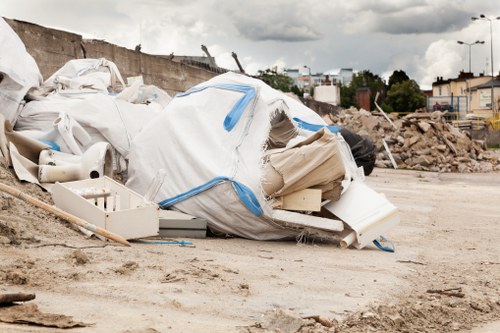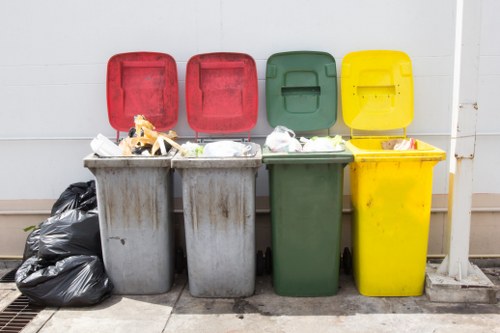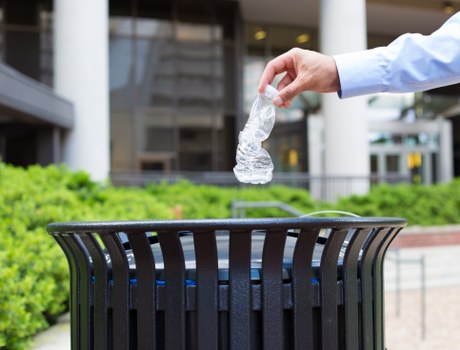Garden Clearance in Clearance Sucks
Understanding the Importance of Garden Clearance

Maintaining a beautiful and functional garden requires regular garden clearance. Whether you're preparing for a new season or simply decluttering, effective garden clearance is essential for the health and aesthetics of your outdoor space.
However, many homeowners find that garden clearance in Clearance Sucks can be a daunting task. From dealing with overgrown vegetation to managing waste disposal, the challenges can quickly become overwhelming.
In this article, we'll explore the various aspects of garden clearance, why it might seem like clearance sucks, and how you can overcome these hurdles to achieve a pristine garden.
Common Challenges in Garden Clearance

One of the primary reasons garden clearance can be exhausting is the sheer volume of work involved. Overgrown shrubs, fallen branches, and accumulated debris can make the process time-consuming and physically demanding.
Additionally, improper clearance can lead to environmental issues. For instance, leaving behind cuttings and debris can attract pests, promote the growth of unwanted plants, and even impact the soil quality of your garden.
Another challenge is the disposal of garden waste. Not all waste can be simply thrown away; some materials require special handling or recycling. Navigating local regulations and finding suitable disposal methods can add to the frustration.
Benefits of Professional Garden Clearance Services

While tackling garden clearance on your own might seem cost-effective, hiring professional services can offer numerous benefits. Experts have the right tools and expertise to handle even the most stubborn garden clutter efficiently.
Professional garden clearance ensures that all waste is disposed of responsibly, adhering to environmental guidelines. This not only keeps your garden clean but also contributes to a healthier ecosystem.
Moreover, professionals can provide valuable advice on maintaining your garden post-clearance, helping you prevent future overgrowth and maintain its beauty with ease.
Steps to Effective Garden Clearance

Embarking on a garden clearance project involves several key steps to ensure success:
- Assessment: Begin by evaluating the extent of the clearance needed. Identify areas with overgrowth, dead plants, and accumulated debris.
- Planning: Develop a clear plan outlining the tasks to be completed, tools required, and timelines.
- Execution: Start clearing the designated areas, ensuring safety and efficiency throughout the process.
- Disposal: Properly dispose of all garden waste, considering recycling and environmental protection.
- Maintenance: Implement a regular maintenance schedule to keep your garden tidy and prevent future clutter.
Tools and Equipment for Garden Clearance

Having the right tools can make garden clearance significantly easier. Essential equipment includes:
- Pruning Shears: For trimming overgrown branches and shrubs.
- Rakes: To gather leaves and loose debris efficiently.
- Garden Fork: Useful for digging and removing stubborn weeds.
- Wheelbarrows: Facilitates the transportation of garden waste to disposal areas.
- Protective Gear: Ensures safety while handling heavy or sharp garden materials.
Eco-Friendly Garden Clearance Practices
Adopting eco-friendly practices during garden clearance not only benefits the environment but also enhances the sustainability of your garden. Consider the following approaches:
- Composting: Convert organic waste into nutrient-rich compost to enrich your garden soil.
- Recycling: Reuse materials like wood and metal in creative garden projects.
- Selective Clearing: Remove only the necessary debris, preserving as much of the natural ecosystem as possible.
- Native Plants: Replace removed plants with native species that thrive in your local environment.
- Water Management: Implement systems to manage runoff and maintain soil moisture levels effectively.
By integrating these practices, garden clearance in Clearance Sucks can transform into a rewarding and sustainable activity.
When to Seek Professional Help
While basic garden clearance tasks can be managed independently, certain situations warrant professional assistance:
- Large-Scale Overgrowth: When dealing with extensive vegetation that requires specialized equipment.
- Hazardous Materials: Handling thorny plants, toxic foliage, or other dangerous materials safely.
- Time Constraints: When you lack the time to dedicate to thorough garden clearance.
- Expertise: Need for professional advice on garden design and maintenance post-clearance.
- Regulatory Compliance: Ensuring adherence to local waste disposal and environmental regulations.
Engaging professionals can alleviate the stress associated with these complex tasks, making garden clearance a seamless experience.
Cost-Effective Strategies for Garden Clearance
Managing the costs associated with garden clearance doesn't mean compromising on quality. Here are some strategies to keep expenses in check:
- DIY Where Possible: Handle simple tasks like raking and light pruning to reduce labor costs.
- Plan Ahead: Scheduling clearance during off-peak seasons can lead to discounted service rates.
- Reuse Materials: Salvage and repurpose garden waste to minimize disposal fees.
- Compare Quotes: Obtain multiple estimates from different service providers to find the best value.
- Regular Maintenance: Prevent excessive overgrowth by maintaining your garden regularly, reducing the need for extensive clearance.
Implementing these methods can make garden clearance in Clearance Sucks more affordable and manageable.
Maintaining Your Garden Post-Clearance
After completing garden clearance, maintaining your outdoor space is crucial to prevent future clutter and ensure ongoing beauty:
- Regular Pruning: Keep plants and shrubs in check by trimming them as needed.
- Weed Control: Remove weeds promptly to avoid them taking over your garden.
- Soil Health: Use compost and fertilizers to maintain nutrient-rich soil.
- Irrigation Systems: Install efficient watering systems to keep your garden hydrated without waste.
- Scheduled Inspections: Periodically assess your garden to identify and address any new issues early.
By following these maintenance tips, you can ensure that garden clearance remains a straightforward and manageable task, keeping your garden vibrant and inviting.
Choosing the Right Garden Clearance Service
Selecting a reliable and efficient garden clearance service is vital for achieving the best results. Consider the following factors when making your choice:
- Experience: Look for companies with a proven track record in garden clearance and maintenance.
- Services Offered: Ensure the service covers all aspects of clearance, including waste disposal and disposal adherence.
- Customer Reviews: Check testimonials and reviews to gauge customer satisfaction and service quality.
- Pricing: Compare pricing structures and ensure they align with your budget without hidden fees.
- Insurance: Confirm that the service provider is insured to protect against any potential damages or accidents.
By carefully evaluating these factors, you can find a garden clearance service in Clearance Sucks that meets your needs and ensures a hassle-free experience.
The Environmental Impact of Garden Clearance
Proper garden clearance plays a significant role in maintaining environmental balance. Neglecting clearance can lead to:
- Habitat Disruption: Overgrown gardens can disrupt local wildlife habitats, affecting biodiversity.
- Soil Degradation: Excessive plant material can lead to soil compaction and nutrient imbalance.
- Pest Proliferation: Decaying organic matter can attract pests and lead to infestations.
- Water Pollution: Improper disposal of garden waste can contaminate local water sources.
- Air Quality: Unmanaged plant debris can contribute to poor air quality in the surrounding area.
By ensuring thorough and eco-friendly garden clearance, you contribute to a healthier environment and promote sustainable gardening practices.
Innovative Techniques in Garden Clearance
Advancements in gardening technology have introduced innovative techniques to simplify garden clearance. Some of these include:
- Robotic Lawn Mowers: Automate the maintenance of your lawn, reducing the need for manual clearing.
- Mulching Machines: Efficiently convert garden waste into beneficial mulch for soil enrichment.
- Electric Tools: Offer eco-friendly alternatives to traditional gas-powered equipment, minimizing emissions.
- Smart Irrigation: Utilize technology to optimize watering schedules, preventing overgrowth.
- Sustainable Materials: Use recycled and biodegradable materials in garden projects to reduce waste.
Incorporating these modern solutions can make garden clearance in Clearance Sucks more efficient, environmentally friendly, and less labor-intensive.
Seasonal Considerations for Garden Clearance
Different seasons present unique challenges and opportunities for garden clearance:
- Spring: Start clearing debris from winter, prepare beds for planting, and prune early growth.
- Summer: Manage rapid plant growth, address weeds, and maintain soil moisture levels.
- Autumn: Clear fallen leaves, dead plants, and prepare the garden for winter dormancy.
- Winter: Handle dormant plant materials, protect sensitive plants, and plan for the upcoming year.
Understanding seasonal dynamics helps in scheduling effective garden clearance, ensuring your garden remains healthy and vibrant throughout the year.
DIY vs. Professional Garden Clearance
Deciding between DIY garden clearance and hiring professionals depends on several factors:
- Scope of Work: Large or complex gardens may benefit more from professional expertise.
- Time Availability: If you're short on time, professionals can expedite the process effectively.
- Physical Capacity: Consider your ability to handle physically demanding tasks involved in clearance.
- Budget: Weigh the costs of hiring professionals against the value of your time and effort.
- Desired Outcome: Professionals often deliver higher-quality results with meticulous attention to detail.
Ultimately, the choice between DIY and professional garden clearance in Clearance Sucks hinges on your specific needs, resources, and long-term gardening goals.
Preparing Your Garden for Clearance
Proper preparation can make garden clearance more efficient and less stressful:
- Gather Tools: Ensure you have all necessary tools and equipment before starting.
- Set Goals: Define what you aim to achieve through clearance, whether it's aesthetic improvement or plant health.
- Create a Timeline: Outline the steps and schedule to keep the process organized and on track.
- Safety First: Wear appropriate protective gear and follow safety protocols to prevent injuries.
- Waste Management Plan: Decide how and where you'll dispose of the cleared materials efficiently.
By laying the groundwork, you can streamline the garden clearance process, making it more manageable and effective.
Maximizing Garden Space Post-Clearance
After completing clearance, optimizing your garden space can enhance its functionality and beauty:
- New Plantings: Introduce fresh plants that thrive in your garden's conditions.
- Garden Structures: Add elements like paths, borders, or seating areas to improve layout and usability.
- Lighting: Incorporate lighting fixtures to highlight key features and extend garden use into the evening.
- Water Features: Install fountains or ponds to add a soothing ambiance.
- Decorative Elements: Use ornaments, sculptures, or garden art to personalize your space.
Strategic enhancements post-clearance can transform your garden into a more inviting and enjoyable environment.
Maintaining Sustainability in Your Garden
Sustainability should be a key consideration in all gardening activities, including clearance:
- Use Organic Methods: Avoid chemical fertilizers and pesticides, opting for natural alternatives instead.
- Water Conservation: Implement rainwater harvesting and efficient irrigation systems to reduce water usage.
- Biodiversity: Encourage a variety of plant species to support local wildlife and ecosystem health.
- Reduce Waste: Minimize garden waste through composting and recycling efforts.
- Energy Efficiency: Utilize energy-efficient tools and technologies in garden maintenance.
By fostering sustainability, your garden becomes not only beautiful but also environmentally responsible.
Final Thoughts on Garden Clearance in Clearance Sucks
While garden clearance can initially seem like a challenging and unpleasant task, understanding its importance and approaching it methodically can transform the experience. Whether you choose to undertake the clearance yourself or hire professionals, the benefits of a well-maintained garden are undeniable.
Embrace effective clearance practices, leverage expert services when needed, and maintain your garden regularly to enjoy a vibrant and healthy outdoor space year-round.
Contact us today to book your garden clearance service and take the first step towards a stunning and clutter-free garden!